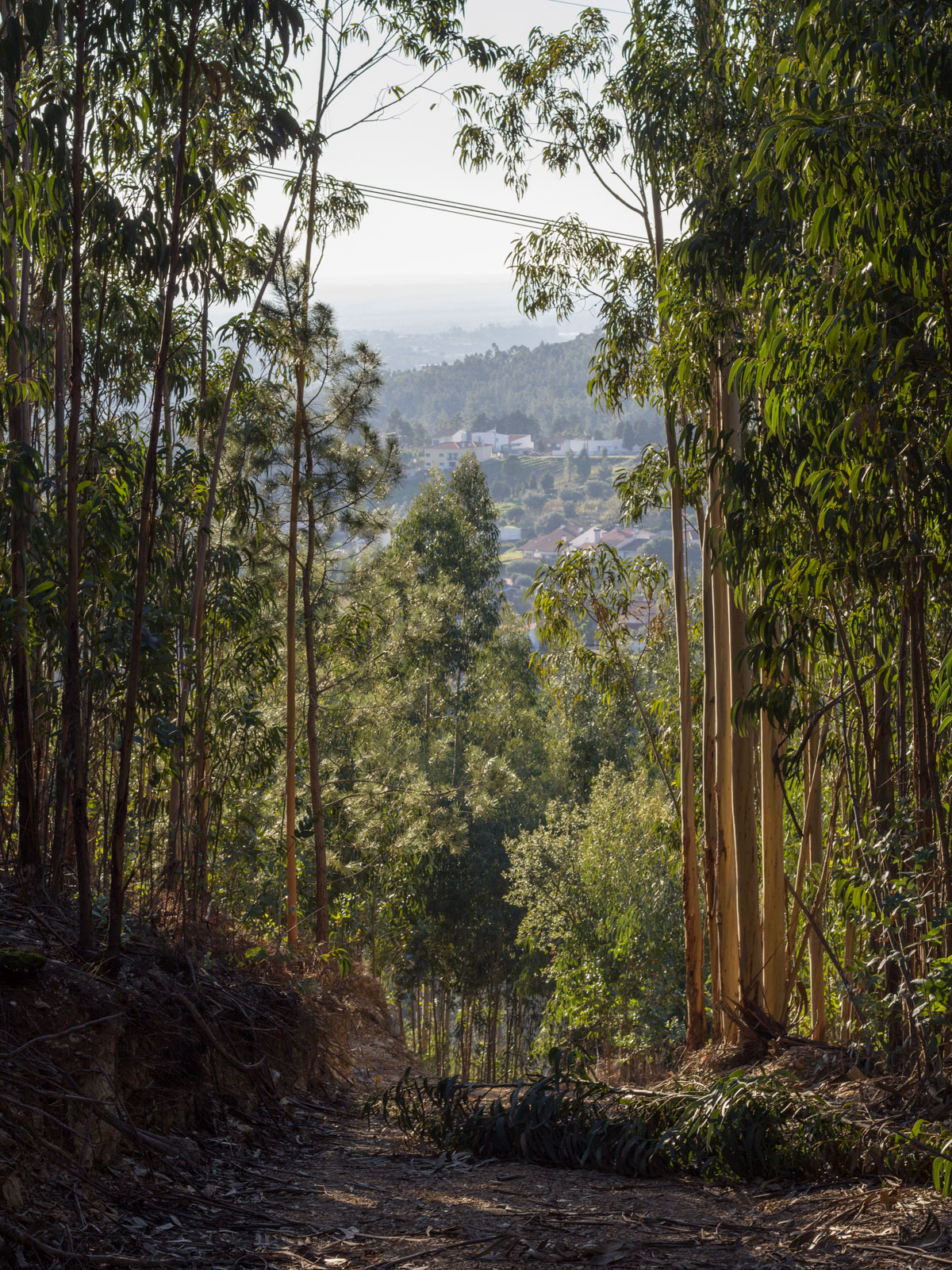Here is Nightjar with the next chapter in her series.
Chapter 7 – West Hill: Going Up
We are now at the southern base of the West Hill and the entrance looks inviting. We are in a totally different environment, the soils here are obviously more fertile and can sustain denser vegetation. Let’s go up.
Tree roots and rocks live in harmony, and we found some dead wood with interesting textures. Some of you may recognize the shape of those fallen leaves. Pines don’t rule this landscape, that’s for sure.
Looking down our path we must reach a sad conclusion. The exotic eucalypts rule this landscape and native trees are almost absent nowadays. We should be looking at a diverse oak forest, but we aren’t.
This level of habitat destruction makes me sad, but I’ve ranted enough about eucalypts on this blog. Let’s look one last time through the branches to wave back at the limestone hill we explored in the previous chapters and then focus on the ground. Because trust me, the rocks here are truly marvelous. And there are some puffballs too.
Thanks, Nightjar.







Those are very good looking puffballs. I have a friend who used to invest a lot of energy looking for wild mushrooms. She always said that finding a puffball was like finding gold.
It’s difficult to watch an invasive species take over a forest. Several years ago my area lost thousands of mature ash trees to the Emerald Ash Borer which can now survive at this latitude. One of our favourite parks (by the river) is still full of the carcasses of the big trees.
It’s difficult to watch an invasive species take over anywhere. We have areas where Japanese knotweed has eliminatd every other plant, it’s roots run deep and it is extrememly difficult to get rid of, I’ve seen it grow through concrete. So I sympathise with your hurt rq, oak would be so much more welcoming to other species.
It’s always sad to see a monoculture of exotics take over a landscape. Here in the land of the eucalypts it’s often the humble olive tree that takes over the lower slopes and muscles out the natives.
Thanks :D but I think the original sentiment was Nightjar‘s.
I’m very much enjoying this series, Nightjar. So much diversity -- much of it looks familiar, but most of it is just different enough to qualify as exotic. I just love that opening shot with the pathway leading up, definitely inviting!
The landscape contrast reminds me of a student trip to Portugal I participated in 10 years ago. The coastal strip around Porto and Coimbra was lush with gardens and eucalypt stands. Inland, Douro valley was steep like a canyon and relatively arid looking, with mostly bare rock and hillside vineyards.
Oops, sorry Nightjar!
Yes, the eucalyptus trees. As a child we visited the Sierra de Monchique, with its beautful cork oak forrests … and suddenly eucalyptus trees. I remember being very puzzeled and my parents could not answer me why there where australian trees growing in portugal.
Such beautiful shots, Nightjar. Makes me want to travel to portugal again *dreams* :)
On the topic of invasive species, right now I am observing an interesting thing going on in front of my house. The land used to be an eucalypt monoculture, but after last year’s legislation forbidding dense eucalypt plantations close to buildings the owners cut and uprooted all the eucalypts. I don’t know if they want to plant something else there, but right now the land is being taken over by… the South African Oxalis pes-caprae. :(